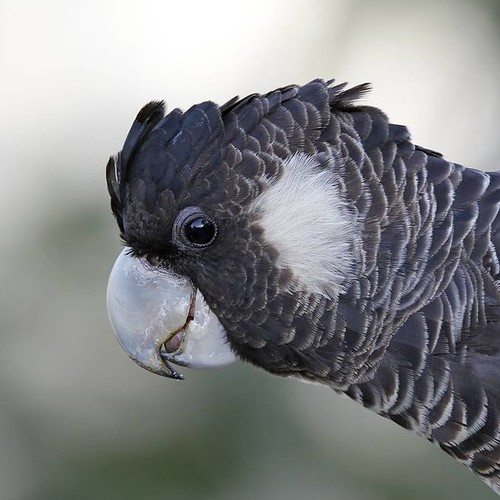 Census: Carnaby's Cockatoos will be counted around the state on April 6. Photo by Keith Lightbody.COCKATOOS are an Australian icon, known for their distinctive head feathers and larrikin behavior.
Census: Carnaby's Cockatoos will be counted around the state on April 6. Photo by Keith Lightbody.COCKATOOS are an Australian icon, known for their distinctive head feathers and larrikin behavior.
But the endangered black Carnaby's Cockatoo - found only in Southwest WA - is in trouble, and needs the help of locals as part of BirdLife Australians annual survey the Great Cocky Count April 6.
The Great Cocky Count occurs in early April every year and works like a human census – at sunset for one night of the year people go to known over-night roost sites for Carnaby’s Cockatoos and count the birds as they arrive to roost for the night.
Great Cocky Count Coordinator Dr Hugh Finn said the Wheatbelt was critical to the survival of Carnaby’s Cockatoos, with most of the species breeds within remnant woodland in agricultural areas.
He said most Cockie would be in costal areas over the summer months, but some birds still be likely to roost in Wagin and surrounds.
"For Wagin, the nearest reported sites for the Great Cocky Count would be up in Narrogin. However, there will be over-night roosts around Wagin and surrounds as well, it’s just that they haven’t been formally reported yet," Dr Finn said.
Dr Finn said Locals can submit the location of roost sites and these can be added to the database.
A breeding range survey is also run year-round, with farmers and significant landholders urged to assist by report sightings of the Cockatoos - as their land contains most of the breeding habitat for the species.
"There are lots of good news stories around. In many places, farmers have managed their land to create Cockatoo 'Club Meds.' Fencing off native bush, maintaining old hollows, installing nest boxes, and planting cockatoo foods plants are all great ways to manage farms for Carnaby’s."
Clearing of native vegetation has removed feeding and breeding habitat, resulting in species numbers to declining by half.
Dr Finn said it’s a pattern of local extinction, with breeding success declines in specific areas because they are not enough hollows or too little food available, until no breeding pairs remain and the birds disappear from the landscape.
"As native foods have declined Carnaby’s have learned to food on canola as well as other non-native foods like pine and wild radishes. Studies have shown that the Carnaby’s damage only a very small fraction of farmer’s crops, much less than other birds."
More information about the count is available at birdlife.org.au/carnabys/great-cocky-count.